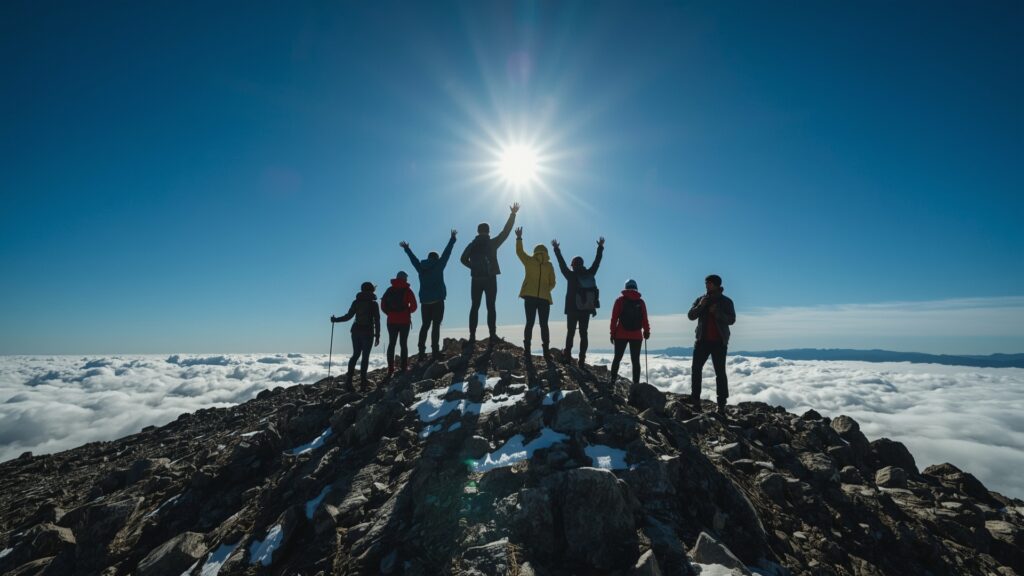If you’ve ever dreamed of standing above the clouds, gazing out at endless peaks, and feeling the exhilaration of a high-altitude hike, you’re not alone. My own journey from the valleys of Oaxaca to the soaring Andes and Himalayas taught me that hiking at altitude is as much about preparation as it is about passion. Whether you’re planning your first trek or looking to refine your approach, this is How to Prepare for a High-Altitude Hike—my personal journey with research-backed guide.
Why High-Altitude Hiking Demands Special Preparation
When you travel above 2,500 meters (8,200 feet), the air thins, oxygen drops, and your body faces new challenges. According to the Wilderness & Environmental Medicine Journal (2019), up to 50% of trekkers at moderate altitudes experience some symptoms of Acute Mountain Sickness (AMS). But with the right preparation, you can dramatically reduce your risk and maximize your enjoyment.
Step 1: Train Your Body—Start Early, Go Slow
Build Endurance and Strength
I always recommend beginning your training at least 8–12 weeks before your hike. Focus on:
- Cardio: Running, cycling, swimming, or brisk walking—aim for 30–60 minutes, 3–5 times a week.
- Strength Training: Don’t neglect your legs, core, and back. Squats, lunges, and planks are your friends.
- Stair Climbing or Hill Workouts: Simulate the uphills you’ll face on the trail.
Practice With a Loaded Pack
Hiking with your actual backpack, gradually increasing the weight, will condition your muscles and prevent surprises on the trail.
Step 2: Acclimatize—Give Your Body Time to Adjust
The Golden Rule: “Climb High, Sleep Low”
When I trekked in Nepal, I learned the value of gradual ascent. Plan your itinerary to allow for:
- Slow Ascent: Gain no more than 300–500 meters (1,000–1,600 feet) per day above 2,500 meters.
- Rest Days: Schedule a rest day every 3–4 days to let your body catch up.
- Hydration: Drink plenty of water—altitude dehydrates you faster than you think.
Recognize AMS Symptoms
Headache, nausea, fatigue, and dizziness are early signs. If symptoms worsen, descend immediately—no summit is worth your health.

Step 3: Nutrition and Hydration—Fuel for Altitude
- Eat Carbs: Your body uses more energy at altitude. I favor whole grains, fruits, and energy bars.
- Avoid Alcohol and Caffeine: Both can worsen dehydration and AMS risk.
- Electrolytes: I always pack electrolyte tablets to replenish minerals lost through sweat.
Step 4: Gear Up—Pack Smart, Pack Light
Essentials: how to prepare for a High-Altitude Hike
- Layered Clothing: Weather changes fast. I rely on moisture-wicking base layers, insulating mid-layers, and a waterproof shell.
- Sun Protection: UV rays are stronger at altitude. Sunglasses, SPF 50 sunscreen, and a wide-brimmed hat are non-negotiable.
- First Aid Kit: Include AMS medication (like acetazolamide, if prescribed), painkillers, and blister care.
- Trekking Poles: They reduce knee strain and help with balance on steep ascents and descents.
My Packing List Musts
| Item | Why It Matters |
|---|---|
| Down Jacket | Warmth without weight |
| Merino Wool Socks | Prevent blisters, wick moisture |
| Water Filter Bottle | Safe hydration anywhere |
| Headlamp | Early starts and late finishes |
| Energy Snacks | Quick fuel for tough sections |
Step 5: Mental Preparation—Mind Over Mountain
Altitude hiking is as much a mental challenge as a physical one. I practice mindfulness, positive self-talk, and visualization techniques before and during my hikes. Remember: it’s okay to feel nervous. Trust your training, listen to your body, and celebrate every step.
Step 6: Safety First—Know When to Turn Back
- Monitor Weather: Mountain weather changes fast—always check forecasts and be ready to adjust plans.
- Buddy System: If possible, hike with a partner or group for safety.
- Emergency Plan: Know evacuation routes and carry a satellite communicator if you’re going remote.
Forever-in-Demand Advice: Listen to Your Body
Every hiker’s experience with altitude is unique. What worked for me in the Andes might need tweaking for your Kilimanjaro or Rockies adventure. The most timeless advice? Listen to your body. No summit is worth risking your health.
For your reference I’ve included a list of trusted sources and publications below to support the information shared in this article.
Final Thoughts
Preparing for a high-altitude hike is a journey in itself—one that rewards you with resilience, confidence, and a new appreciation for the world above the clouds. With the right training, smart packing, and a flexible mindset, you’ll be ready to rise above and make your summit dreams a reality.
If you have questions or want to share your own high-altitude stories, I’d love to hear from you. Buen camino y buena suerte—happy hiking!


